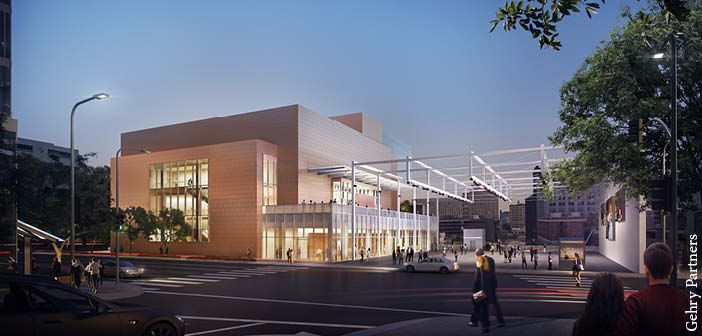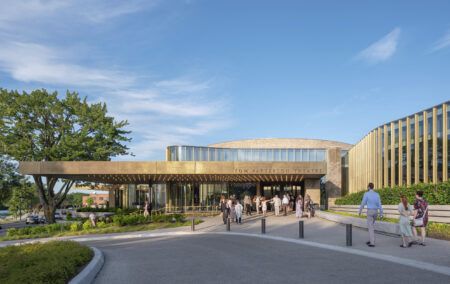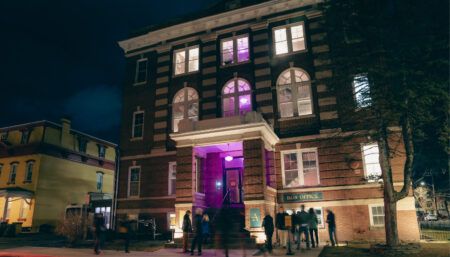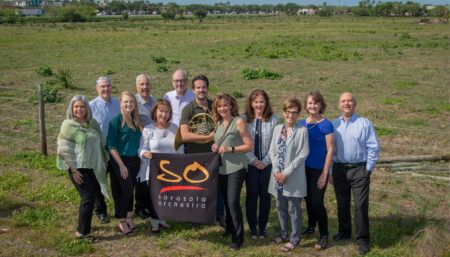Frank Gehry’s architectural designs for the Colburn Center – a 100,000ft² (9,290.3m²) expansion of the Colburn School campus in downtown Los Angeles – have been shared. The centre is being created to serve the area’s young performing artists, performing arts organisations and ensembles.
The centre will be located across the street from the school’s existing campus in the cultural corridor that includes Walt Disney Concert Hall, the Music Center, the Museum of Contemporary Art and The Broad.

The Colburn Center will also enable the school to expand its mission of presenting programmes for the public, including performance and educational collaborations with local and touring artists and ensembles. It will also provide performance space in a mid-sized hall for the region’s established and emerging performing arts organisations.
Gehry’s design is a dynamic composition of transparent and opaque interlocking blocks that step down into the natural contour of the site. A 1,000-seat concert hall uses an in-the-round design to create intimacy between the performers and the audience and removes the stage lip, putting front-row seats at eye-level with the performers. Orchestral music, opera, dance and musical theatre will be accommodated; the hall design includes an orchestra pit and a stage large enough for the largest orchestrations.
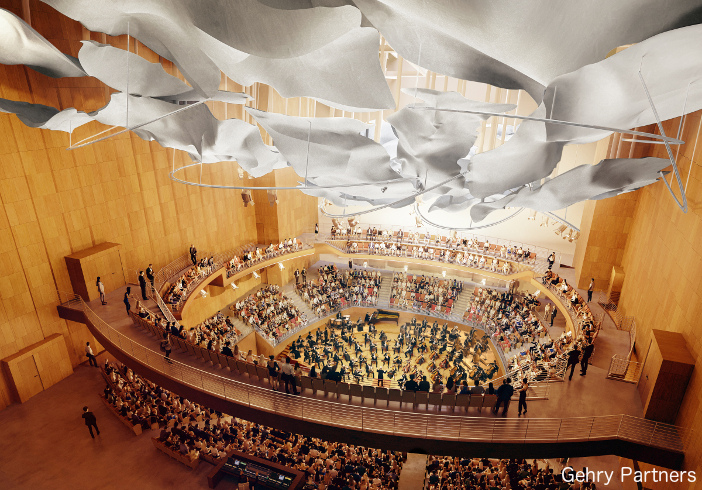
Four professional-size dance studios and a 100-seat flexible studio theatre are enveloped in glass and provide a literal window into dance training and performance. With a separate entrance and distinct architectural character, the dance facilities are designed to be filled with light, with their own identity, while harmonising with the larger project.
The Colburn Center will be equipped to take a modern approach to multimedia technology and production. The facilities include commercial-quality recording and streaming capabilities, and performance spaces will be outfitted with state-of-the-art lighting. Public spaces include an outdoor plaza, giving visitors a front-row seat to the performing arts, and gardens providing green space and pedestrian access to nearby public transit hubs.
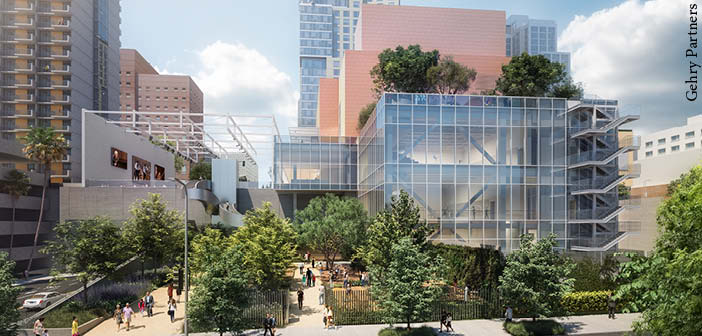
The new complex is expected to break ground in 2023 and to host its first performances in Autumn 2025. The Colburn Center will complete the largest concentration of Gehry-designed buildings anywhere in the world, joining the soon-to-open mixed-use project The Grand, and the Walt Disney Concert Hall.
The estimated US$350m campaign for the building has raised US$270m to date. Carol Colburn Grigor, chair emeritus of the board of trustees, spearheaded the campaign, with generous leadership support from Terri and Jerry Kohl. In appreciation for the Kohl’s leadership gift, the 1,000-seat concert hall will be named Terri and Jerry Kohl Hall. Their gift also includes seeding an endowment fund to help underwrite access to Terri and Jerry Kohl Hall for Los Angeles-based performing arts organisations, artists and ensembles. The flagship ensemble of the Conservatory of Music, the Colburn Orchestra, will be generously underwritten by Eva and Marc Stern and will have its first permanent home in Terri and Jerry Kohl Hall.
Making performance accessible to LA audiences and artists is a core tenet of Colburn that is also expressed through its educational experience. The new building will serve the Colburn School’s students at all levels and disciplines, including the Conservatory of Music and the Trudl Zipper Dance Institute. The expansion will also provide additional performance space for Colburn’s pre-collegiate Music Academy and its Community School of Performing Arts.

The expansion project reunites Gehry with his collaborator Yasuhisa Toyota of Nagata Acoustics, chief acoustician for concert halls including Walt Disney Concert Hall, Suntory Hall (in Tokyo, Japan), and the Elbphilharmonie (in Hamburg, Germany). The project team also includes Michael Ferguson, principal of TheatreDNA, who formerly consulted on Gehry’s New World Center in Miami Beach and Fisher Center for the Performing Arts at Bard College.
“The Colburn School is an incredibly important asset to the cultural district of Downtown Los Angeles,” said Gehry. “Their new hall is a major blessing for the music world of this city, and I am honoured to be a part of it. I hope that we have helped create a setting to nurture and grow the next generations of talent.”
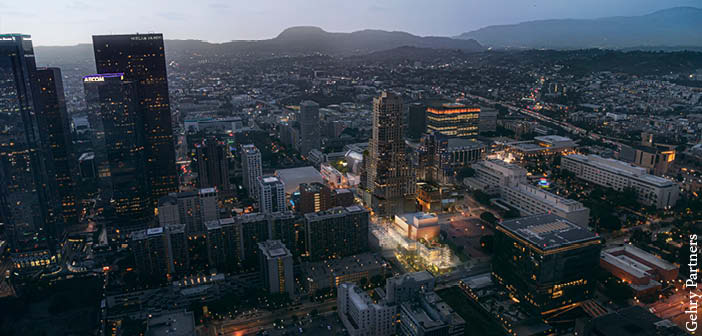
The design
Conceived as an ensemble of interlocking volumes, each of which houses a distinct programme while interacting with the whole, the Colburn Center will be built into a terrain that slopes down from Olive Street to Hill Street. On the Olive Street side, a transparent, three-storey-high main entrance and lobby will lead to the building’s 1,000-seat concert hall: the Colburn School’s first venue for a full-scale orchestra and home to the Conservatory’s flagship ensemble, the Colburn Orchestra.
Terri and Jerry Kohl Hall will feature floating balconies and tiers of seats embracing a circular stage area, as well as an orchestra pit to accommodate up to 70 musicians. The panels of an acoustical ceiling suspended above will resemble clouds floating over the hall. In keeping with this airy atmosphere, two skylights will bring daylight into the space.
The dance spaces housing the Trudl Zipper Dance Institute will create a comprehensive dance education complex. Glass-enclosed studios and a studio theatre with 100 seats will face Hill Street. The transparent spaces will create opportunities for the public to witness dance training. The studio theatre will sit atop a two-storey stack of four dance studios – three measuring 2,600ft² (242m²) and another for tap dance measuring 1,400ft² (130m²). Due to the slope of the terrain, the studio theatre will be at the same level as the entrance to the concert hall.
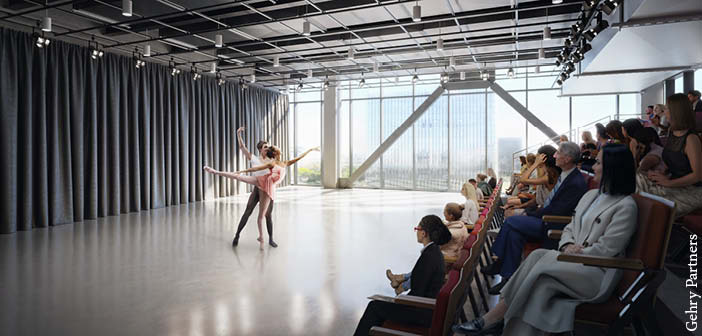
“These glass studios will make dance visible every day as people walk by this building that dances,” said Silas Farley, dean of Colburn School’s Trudl Zipper Dance Institute. “We will be able to explore the synthesis of music and dance and be a global gathering place for the investigation of dance and music, architecture and design.”
A roof garden on top of the studio theatre offers space for pre-performance receptions, intermission gatherings or small-scale outdoor performances. A second garden at ground level includes an area for the public as well as a gated entrance at Hill Street and 2nd Street, where students, faculty, parents and visitors may gather, including to enjoy small concerts.
Images: Gehry Partners


